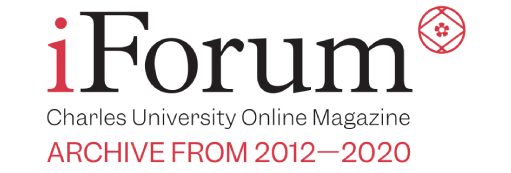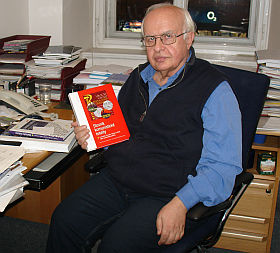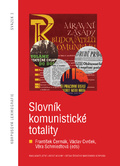10 February 2011
Dictionary of Communism Now Available to the Public
The Dictionary of Communist Totalitarianism, published in late 2010, is the first attempt to map the language of the official communist propaganda. The dictionary was put together by the researchers at the Institute of the Czech National Corpus, a unique research group affiliated with the Charles University Faculty of Arts. We interviewed the director of the institute, Professor František Čermák.
|
What exactly is the corpus that your institute is working on? Corpus is a database of digitally stored documents (and transcripts of speech in case of oral communication) that serves as material for the research of language. All our corpora are gradually being made accessible on the Internet for public use. Today, they contain over 3 billion words, making our corpus the largest one in Europe and one of the largest in the world. Institute of the Czech National Corpus is a one-of-a-kind research institution in the Czech Republic, collaborating with 15 other institutions. |
|
What was the impulse to found the Czech National Corpus and what has been included so far?
The project of the Czech National Corpus as primarily aimed to satisfy the needs of linguists, but today, historians, sociologists and other experts also use it. We stress the importance of contemporary language, which is represented quite exhaustively. No other part of language can be wholly described, especially for instance scientific terminology.
In late 2010, you published an extensive volume called Dictionary of Communist Totalitarianism. Why did you focus on this era and how much time did your team spend working on it?
I’ve had the impression that such we lack such a volume for a long time. The work on the dictionary itself was just the tip of the iceberg, it took about a year. It was much more difficult to compile the data needed for the project. Based on recommendations by historians, we picked four critical quarters of the Rudé Právo daily paper, the official tribune of the Communist Party of Czechoslovakia. Then we had these scanned, which took a few years. Later, we included about a hundred best known handbooks of propaganda.
What can we find in the dictionary?
We sorted the words by frequency and compared them to the contemporary language based on indices. That would not be enough, though. Few people are interested in figures alone. That’s why we included collocations, or typical combinations of words indicative of the times. The book also contains an introductory study that offers an overview of specific pragmatic and semantic features of the totalitarian language, as well as actual examples of texts and pamphlets from the era. Users also get the whole corpus on a CD and can install it on their computer and perform their own searches. We couldn’t include anything more, because it would be difficult to sell.
How big was the team working on the volume?
The team itself consisted of about 10 people, not including the people who were contracted to do the scanning.
Do you consider the topic of communist propaganda a closed chapter, or do you want to continue this research?
Unfortunately, we don’t have data for any further research. Even the successor party of the Communist Party of Czechoslovakia doesn’t have the archive of Rudé Právo digitised and they cannot have it done by us. I cannot rule out any further research into this topic. Now we want to focus more on the 16th and 17th century periods and the Baroque era. However, there might be smaller-scale specialized studies based on the material coming up.
|
|
Čermák, F., Cvrček, V., Schmiedtová, V. (eds): Slovník komunistické totality. Nakladatelství Lidové noviny, Praha 2010. ISBN 978-80-7422-060-9 |
(Lucie Kettnerová)


